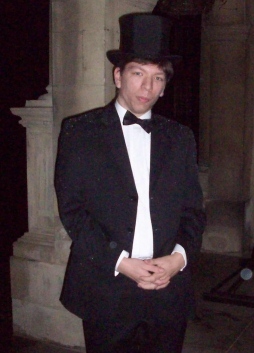
Mirror universes exist!!1
Key points to note:
– I borrowed the top hat for the photo, obviously. (Believe it or not, but in black tie rather than white tie I was actually under-dressed.)
– I had taken it off by this point, but the Ken Livingstone badge made its proud appearance.
– The always-charming Cornellius did buy me a gin and tonic ![]()
– It was a good night, and I enjoyed it. But…
– At the end of the day, here’s to not being a conservative!
It’s Sophie’s birthday today! And, in fact, part of my lack of blogging for the past week has been having to keep under wraps my latest Silly Project prepared for today as a birthday present, to which Andy will no doubt wonder how much time I have on my hands. (The same amount of time as you, mate ![]() )
)
Produced together with Owen, Scotland Today, Scotland Tomorrow rested on a simple concept: if you don a suit and carry around a couple of cardboard props, it shouldn’t be difficult to convince the good people of Cambridge to donate a few minutes of their time to compare Gordon Brown to Sophie, the latter of whom morphed into increasingly absurd celebrity. (“…training to be the first Scottish astronaut…”) Sure enough, several kind souls did indeed agree to take part, no doubt partly lured by the offer of a free chocolate chip cookie, and to them I remain eternally grateful. Especially the cheerful Norwegian couple, as well as the dude who agreed to stand on a photo of Brown halfway through the interview to signify his distaste. Go go fake news!
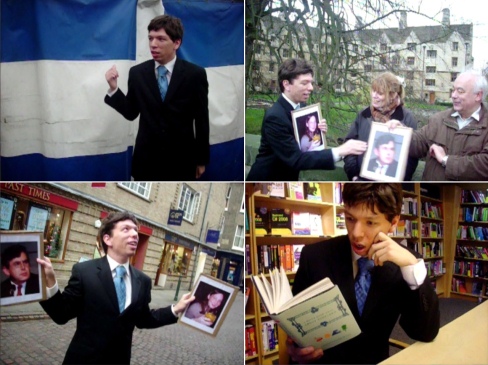
Scenes from ‘Scotland Today, Scotland Tomorrow’
In non-fake ‘actual events’, Leonard and Sebina returned to Cambridge last weekend to take me out for lunch and argue about politics ‘n’ stuff – thanks muchly to them. And on Wednesday night we properly inaugurated a real Yuletide spirit by going to the annual Footlights panto, which was (as you might expect) lots of fun. (Did you know that I once saw Jim Davidson in panto? It was probably the single biggest deviation by my mother from the principles of good parenting, and equally inexplicable, since she’s hardly a fan of him either. Maybe it was a test of taste.)
And speaking of deviations: I now have two black-tie dinners in a row, after which I might just have to compensate by walking around in pyjamas for a week. Tonight is Sophie’s birthday dinner which offers the utterly intriguing ability to meet her parents (who most probably do not, as our film claimed at one point, “own six percent of Scotland”). Tomorrow is far less excusable – I’m going, in a ‘once in a lifetime’ kind of spirit, to the CUCA Chairman’s Dinner. Wearing a Ken Livingstone badge as a protective political talisman, of course. Bring on the quail… ![]()
…as told through Worms. This post is officially dedicated to Jen ![]()

Merlin. In the end, it’s all about the lo-oo-ve!
Sorry I haven’t been up to much real blogging ![]() I did go to a ’30 Years of Women at Caius’ Superhall earlier this week (a Superhall being a much cooler version of normal Hall with fanicer dress but, importantly, also fancier food). Tis true that 30 years is a pretty pathetic milestone to be celebrating, but it was only in 1979 that Caius deigned to lift its bar on, y’know, one half of the entire population of the world. Still, times change…
I did go to a ’30 Years of Women at Caius’ Superhall earlier this week (a Superhall being a much cooler version of normal Hall with fanicer dress but, importantly, also fancier food). Tis true that 30 years is a pretty pathetic milestone to be celebrating, but it was only in 1979 that Caius deigned to lift its bar on, y’know, one half of the entire population of the world. Still, times change…
This post is dedicated to all those who have ever endured the more ‘bollocksy’ end of academia. To everyone else: you may want to just skip to the photos and be done with it.
The birthday party was traditionally understood in terms of a spatially and temporally bounded event, defined as much by its inherent structure as by the agency of the individual actors involved, and generating a narrative which was as much about the party qua the concept of ‘party’ than attempting to set the party in the context of social interplay and culturally specific factors. Over the past twenty years, however, a multitude of new approaches have seen the ‘myth of the birthday party’ attacked on as many fronts. New voices, from the feminist to the post-imperialist, the post-imperalist-feminist and the post-feminist-imperalist, have demanded a new approach: one that is more fluid and open to competing views than the static conceptions of ‘party’ which have gone before. This essay will attempt to explore these recent developments in two parts. First, a brief history of the changing ways in which ‘the birthday party’ can be understood will be analysed, and it will be argued that – although historians have made great bounds in their understanding of some issues – progress has remained, in other areas, patchy and incomplete. Further to this, I shall attempt to use the example of Tom’s Birthday Party (2009) to illustrate the further questions which, I believe, must be asked – as well as suggest some tentative solutions.
Traditionally, narratives of birthday parties tended to follow a rather Whiggish narrative, progressing from the primitive, early stages – the party ‘just getting started’ – until, as events follow their inexorable path, the party is said to be ‘in full swing’, ‘really kicking off’ and suchlike. These assumptions remained largely unchallenged until the 1960s, when historians – particularly of a Marxist inclination – began to poke holes in a logic which seemed on the surface to be all-encompassing but failed to explain, for example, why parties often ended with vomit and tears. Attempting to find answers to these questions, the ‘progress’ narrative was turned on its head: no longer were parties assumed to get ‘better and better’ but, rather, they in fact got worse and worse. Compelling new research was carried out with the aid of previously undiscovered voices. Rather than study the party from the perspective of the bourgeois host or aspirant guests, historians looked to neglected figures in their new narrative of decline: the cleanliness of the carpet, the quality of drunken singing or levels of hand-eye co-ordination.
Such avenues have proved incredibly valuable to the historian since the ‘modernist revolution’, yet questions remained. If a party was no longer a ‘great night’ but rather a sad tale of exploitation, then why did their frequency not diminish over time? Historians of the 1960s and 70s had unearthed many statements of post-party regret – ‘I’ll never drink again’ – and yet a close examination of the sources increasingly revealed that these very same people did, in fact, return to the social domain of the party again and again. And the resurgent fields of economic history in the 1980s led to a growing realisation that previous understanding of the level of capital invested in parties had, most likely, been an under-estimation. People did not simply ‘fight for their right to party’, as the saying goes, but they paid for it too: in the booking of venues, the buying of alcohol and transport costs.
The field of the party became increasingly desperate for a new approach to shed some light on these paradoxes. Ironically – if the word ‘ironically’ is used in its vaguest and least useful sense – this new direction came not from the young turks of the birthday party faculties but through cross-fertilisation with other disciplines. Historians of gender, race and Buffy the Vampire Slayer, for example, had increasingly problematised the idea that concepts such as gender, race or Sarah Michelle Gellar could be understood in a static, uncomplicated way. Often, if read under the new light of post-post-modernism, they were not simply antiquated but absurd. Might these new understandings be applied to the history of the birthday party in a similar way?
Historians who took up the challenge, notably those in the ‘Sussex school’, soon shifted the paradigm away from the ‘birthday party’ and towards the birthday as party, the party as people, the people within the day. Birthday parties, it came to be realised, are neither straightforward progressions nor inexorable declines: they hold up, instead, a fractured mirror to pre-existing social relationships which are then moulded by, and mould, the party itself. Often, these relations lead to conflicts which do not demand a resolution but rather linger in the collective memory for days, months, or even years. And might the party itself thus continue also: no longer with its obvious ties to place and time but rather liberated from them in an ‘imagined community’ of party-goers? This latter suggestion has particularly disturbed the more traditionalist school, who argue – rather unconvincingly – that a party must ‘begin’ and ‘end’ to have any real meaning. But whose beginning, and whose end? That of the host, or hosts? The guests perhaps, or maybe those who ‘maybe attended’ in the Facebook event record? We cannot simply shut the door on the truth, as unpalatable as it might be, that there is no truth but only ‘truths’, and only within inverted commas.
I turn, now, to Tom’s birthday party of last night. In keeping with the approach suggested above, I will not attempt to provide a ‘grand narrative’ of the proceedings but rather outline a number of sites of interest. The theme was, in so far as a theme can be ‘imposed’ from above, that of ‘ruffs and cod-pieces’. ‘It’ was really lovely ‘to’ ‘see’ the fetching ‘hosts’ of ‘Tom’ and ‘Lucy’, as well ‘as’ ‘Irfan’ ‘who’ ‘made’ ‘a’ ‘much’ ”anticipated” ”’appearance”’. ‘Also’, ‘my’ ”college” ”’mother”’ was ‘there’! (By ‘the’ ””’end””’ I was ‘also’ more ”than” ‘fully’ impressed by the ‘cheesy’ music ‘which’ had managed to ”appear”, and ‘not’ ”largely” by my own ‘prompting’. I mean, dear ‘old’ ”Scatman”, and the ‘Hampster Dance’? ‘Hurrah!’)
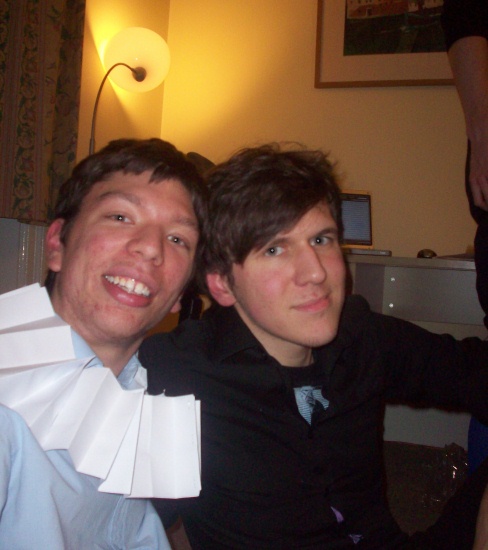
Fig. 1. Dominic and Owen. Note the loose conception of ‘ruff’.
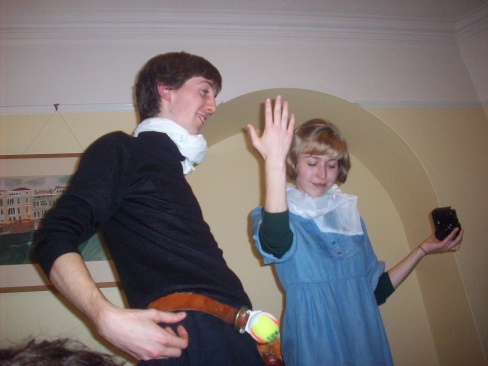
Fig. 2. Tom and Lucy celebrate
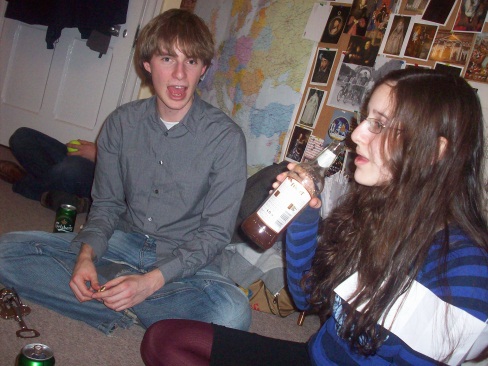
Fig. 3. (I have a really nice photo of these two, but I won’t use it, because all academics are bitter and twisted deep down.)
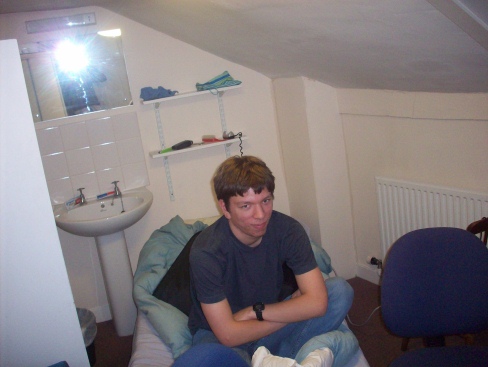
Sheltering from the beeping
Here I am, in my temporary refuge of my spare room. I’ve been driven out from my actual room by an evil beeping noise which has been going on for several days and, once it was brought to my attention, was threatening to drive me psychotic. Today I took emergency action, not only hiding in here but also going around potential candidate buildings and phoning up their owners trying to get a fix on my nemesis.
Until then, I shall reside here. It’s quite nice. There’s even an unsecured wireless network to piggyback on (ssshhh). Still. I miss my old, beep-free room. ![]()










